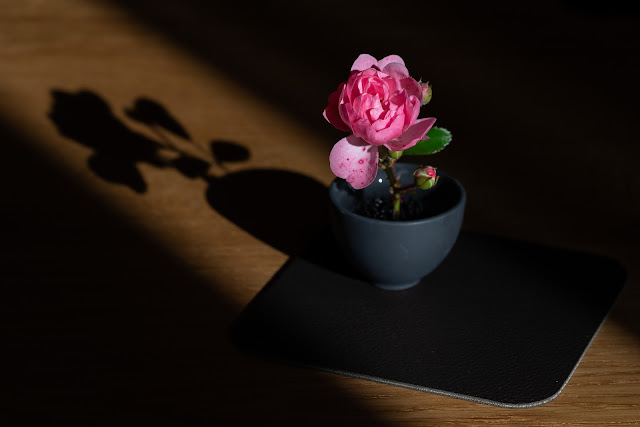What is Exposure and how about Sensor Size?
Some people seem to be really confused about "exposure".
We generally refer to exposure as the light per area on the sensor or the film.
Thus, exposure is only depending on the shutter speed (the time of exposure) and the f-stop (the focal length divided by the diameter of the aperture), and of the illuminance of the scene. The same shutter speed (say 1/100 second) and f-stop (say f/8.0) will produce the same amount of light per sensor or film area for any give scene, independent of the camera. That's exposure. It does not involve ISO as suggested by the infamous "exposure triangle".
I have to admit that the light on the sensor does also depend on the lens to a very small degree, because lenses swallow a bit of light along the way. And I completely ignore neutral density filters or polarizers, of course.
In the old days, films came with different sensitivities to light, so-called speeds. This was normed as ISO100, ISO200 etc. (or as ASA, or DIN). To get the same lightness of the image, the exposure settings (aperture and shutter speed) had to be changed according to the film speed to get an image with the proper lightness. E.g., a fast film allowed photography in very low light. On slow film the result would be too dark.
The ISO setting of digital cameras imitates the ISO on films. The analogue input from the light is translated into a digital output by the analog/digital converter so that the output reflects the brightness it should have with the current ISO. As a result, the lightness of the image will only depend on the shutter speed, the aperture and the ISO number (given the same brightness of the subject), and not the camera.
The ISO norm guarantees that that lightness of an image only depends on
the shutter speed, the f-stop, and the ISO.
Details of the A/D conversion are not important here. It can be done in the sensor, the camera electronic or in two steps in camera and in post-processing. In the end, a specified exposure and ISO number will produce the same image of the same scene on all cameras.
I have to admit that some folks call the lightness of the image its "exposure". But that is adding confusion to this subject. Also, we are talking about over- and under-exposed images, meaning that the image is too dark or too bright. Language can be weird like that.
The real confusion starts when different sensor sizes come into play. Let us assume the same pixel count, like 24MB, on an MFT (micro four thirds) and an FF (full frame) camera. Then each pixel has 1/4 of the size on the MFT. With the same exposure it will collect 1/4 of the light. The AD converter will translate this into the same lightness by using a 4-times higher gain. Unfortunately, this means that the noise will also be 4-times higher relative to the signal. We lose 2 stops of signal to noise ratio. As I have demonstrated elsewhere in this blog, this is indeed a fact of life.
Images of smaller sensors show more noise given the same pixel count and settings.
I have discussed in another posting how equivalent settings can be achieved on different sensors.
It is interesting to discuss what happens when the FF sensor has 4-times more pixels. Then the pixel size is the same as on the MFT, and the AD conversion is the same, resulting in the same noise per pixel. However, the resolution is higher. When the image is reduced to the same resolution, the noise averages out.
I hope to have shed some light on this subject. Have fun!


Comments
Post a Comment